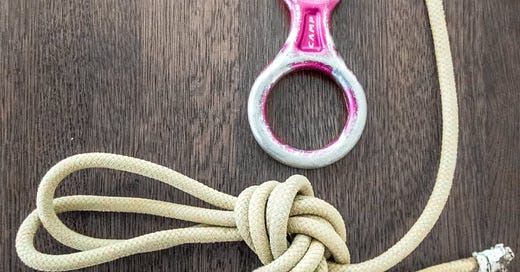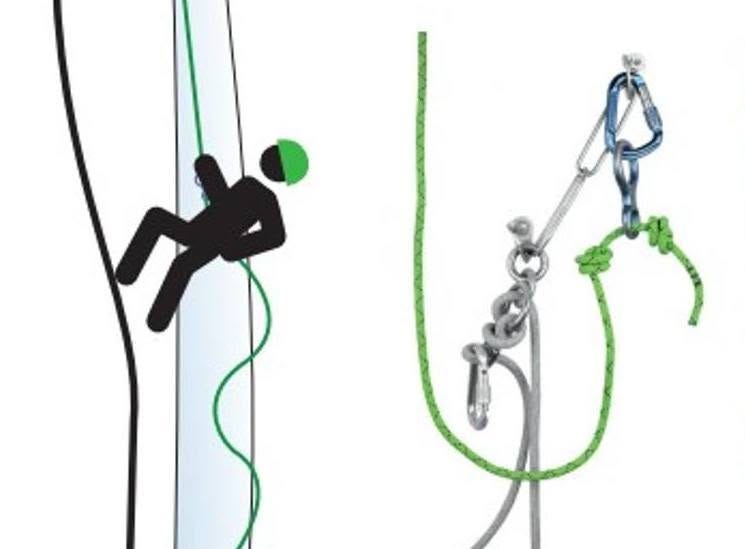Potato Knot/BFK: The effective stopper knot for figure 8 based devices
From time to time in online canyoneering forums/groups, the subject of tying stopper knots at the end of a repelling line comes up.
Stopper knots are definitely a tool in your tool bag to -Mitigate Risk- in this case, mitigate the risk of rappelling off the end of your rope --> For the first person down. After first person is safely down, there is no reason to have stopper knots.
WHY WOULD SOMEONE RAPPEL OFF THE END OF THE ROPE?
First person down does not have a bottom belay and a top rope belay or lower can not be done or has some risks.
Maybe it is dark and you can not see clearly where the rope ends
Maybe the rappeler is very inexperienced and is struggling, nervous and not paying attention to the end of the rope.
BUT MITIGATING THIS RISK WITH STOPPER KNOTS, INTRODUCES NEW RISKS:
Rope recovery failure due to stopper knot not getting untied
Rappel stuck in moving swift water at the stopper knot
Stopper knot getting stuck or jammed in rocks, branches or cracks creating a bottom belay or pigs tails causing the rappeler to get stuck.
In Canyoneering, the risks outlined above get mitigated by Setting Rope Length, which is a big part of the vertical progression and rigging process in canyoneering.
Still, if you decide to use a stopper knot in your line, use an effective one for canyoneering descending devices, usually based on a figure 8 design (see above photo).
Climbers use barrel-knots and single strand figure-8-knot as stopper knots.
These are not effective in canyoneering, unless you are rappelling with a device with stitched plate like a Totem or a Gigi.
Instead, use a Potato-Knot/BFK . It is a 4 stranded Figure-8 on 3 bights. You can add more strands/bights to increase the size of the knot.
Not effective Stopper
Barrel knot/double-overhand: Not effective stopper knot
Effective Stopper
Are there any canyoneering situation where a stopper knot is a good risk mitigation measure?
Looking for a rebelay station? Add a stopper knot that will transition into a rotating stopper. (Photo Credit: Vertical Water)
Secure the upper rope to the rebelay station this way. (Photo credit Manual – Canyoning Rope Techniques).
So, Use them always? Never use them?
They are risk mitigation tools. Sometimes they are superfluous and not necessary, like when the end of the rope is confirmed on the ground. Sometimes they are a good risk mitigation tool, like when you do not know if the rope is reaching the ground, or you are hunting for rebelay stations.







